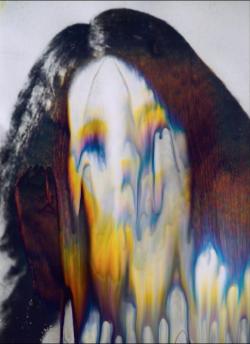In "Under The Same Sky", the latest exhibition at Nova Contemporary by photographer Tada Hengsapkul and artist Chai Siris, personal history and that of the world entwine. In no way does the show appear to strive at having these narratives untangled.
In many ways, works by both artists seem to constitute a united landscape back in time -- a landscape where photography contends with fading memory, where installation objects question the mainstream perception of history and where video works attempt to go back in time.
While many have known Tada through his nude photography, in this show it is another type of nudity altogether; the photographer strips bare his family history and lets viewers explore it in parallel with history on the larger scale. Tada's subject is his hometown Nakhon Ratchasima in the 60s. Fear of communist threats and the insurgency which spread from the Lao Civil War led the Thai government to allow the US to use five Thai bases for the air defence of Thailand and to fly reconnaissance flights over Laos -- in his province it was Korat Royal Thai Air Force Base in Nakhon Ratchasima, from 1962-1975. This base was the largest front-line facility of the US Air Force in Thailand.
Tada's video installation Hidden Love, for instance, features a photograph of his aunt who married an American soldier during that time. Running in slow loop, the face of his aunt, with Tada adding chemical with a dissolving effect onto the photograph, gradually melts into nothingness. His aunt died around the same time that her lover, along with the United States Air Force, left Thailand. The family was reluctant to talk when asked about the cause of her death. Tada wonders if it was in fact self-inflicted, and his video has mournfully captured that mysterious and traumatic episode.
"With my previous works, I never questioned the context and history of the space where my photographs were taken," said Tada, who added the project started about three years ago. "It began with my aunt's story and with questions like, 'How come my dad can speak English?', and 'Why does he listen to The Doors, Black Sabbath and Led Zeppelin?'."
Tada began with a series of field trips and the words of the people who had lived through the era would lead him to several locations where, though traceless today, the air force's key grounds once were.

Hidden Love by Tada Hengsapkul. Photo courtesy of Nova Contemporary
In the series "Invisible Colours", comprising four photographs, the locations in the images look normal, an empty field or a football pitch. Just like his video work, Tada used the same chemical in drawing rough figures onto those images before photographing them once again -- the rough figures the chemical made would give viewers a hint that those locations were actually bombing grounds or the military's radio communication centre.
"That chapter of history makes us realise that the Thai state supported violence in order to safeguard its benefits regardless of the fact that others were fellow human beings," said Tada, referring to Thai people suspected of communism who were killed during that time. "And that led to consequences like the Oct 6, 1976, massacre. It's because we don't see other human beings as equals, being born under the same sky."
Even though Chai's installation work L'Amore Est Mort -- a huge inscription of French words which could be translated as "Love Is Dead. Long Live Love" -- was meant to address the idea of love in Thai society on all levels, the piece is sharply in tune with Tada's subject. When the country faces up to its own atrocity and love is dead, the national psyche, through state's manipulation, is ready to be cleansed and forgotten, and there's love again as if nothing had ever happened.
Other artworks by Chai also echo Tada's set of works in the way that personal history is set at the base while history on the larger scale is being unravelled in parallel. Chai has only recently realised his mother is actually Burmese, that her parents took her and her brother over the Salween River to Thailand more than 50 years ago after the 1962 Burmese coup d'état. One photographic work is a shot of his mother and it is named after her Burmese name, Reena.
In the video work Day For Night, Chai explores that episode of family migration further. We see Chai, asleep and awake alternately and dressed the way, according to his mother, his grandfather usually did, on a boat charging against the current of the Salween River. Then suddenly the video shifts to a night-time exploration inside a deserted, rundown cinema. Then we are back at the river at night, but now the water has dried up and we see a person walking over the mud from afar.
"I'm not trying to recreate the scene in the past, it's just an impression I have of this particular landscape," said Chai of the video work.
"When doing a show, I don't normally have a set subject of focus, but there are various issues that could be linked together and let the viewers explore themselves. It's about my mother's memories. My memories about cinema. About death and rebirth. Personal history and Thai history."
"Under The Same Sky" is on view until Dec 15 at Nova Contemporary, Ground Floor of Baan Somthavil, Soi Mahadlek-Luang 3, Rajdamri Road.

